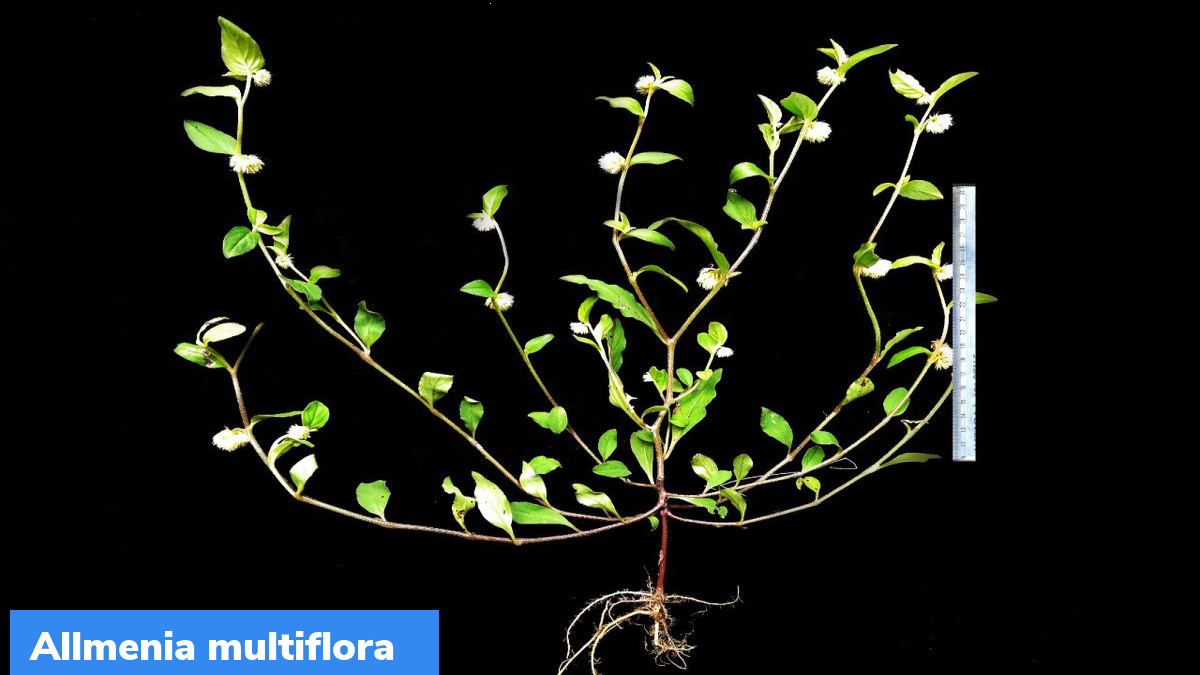Allmenia multiflora
A new species of plant named Allmenia multiflora was discovered on the granite hillocks of Palakkad.
Key facts
- Allmenia multiflora is a new species belonging to the genus Allmania.
- It is only the second species of the Allmania genus found in the world.
- The new species was discovered 188 years after the genus and the first species Allmania nodiflora were described.
- The discovery of the new species was made during the ongoing study of Amaranthaceae – a plant family to which the genus Allmania belongs to.
- Before the new species was identified, Allmania nodiflora was believed to be the only lone species of the genus Allmania.
- Allmania nodiflora was published under the genus Celosia as Celosia nodiflora in 1753. It was later described as Allmania nodiflora in 1834. Its native range span from the Indian subcontinent to China and western and central Malesia.
- Allmania multiflora is an annual herb having unique molecular and morphometric characteristics and its discovery is significant from botanical and conservation perspectives.
- It is found to reach a maximum height of around 60 cm at an altitude between 1,000 to 1,250 meters.
- The herb is erect with branches arising from the base. While the top of the stem is green, the hue of the base range from red to violet.
- The species has shorter tepals and gynoecium and shorter bracts. Flowering and fruiting of the herb occur from May to September.
- It was christened Allmania multiflora because of the presence of a higher number of florets within an inflorescence.
- It is currently found only in a few locations in small numbers. Hence, it was assessed to be a critically endangered species.
- The species is threatened as it is being exploited by local people as a vegetable along with amaranths.
- Its native habitats of granite hillocks, which are situated close to human settlements, are threatened because of fire, grazing, quarrying, pollution, etc.
Month: Current Affairs - October, 2022
Category: Science & Technology Current Affairs








